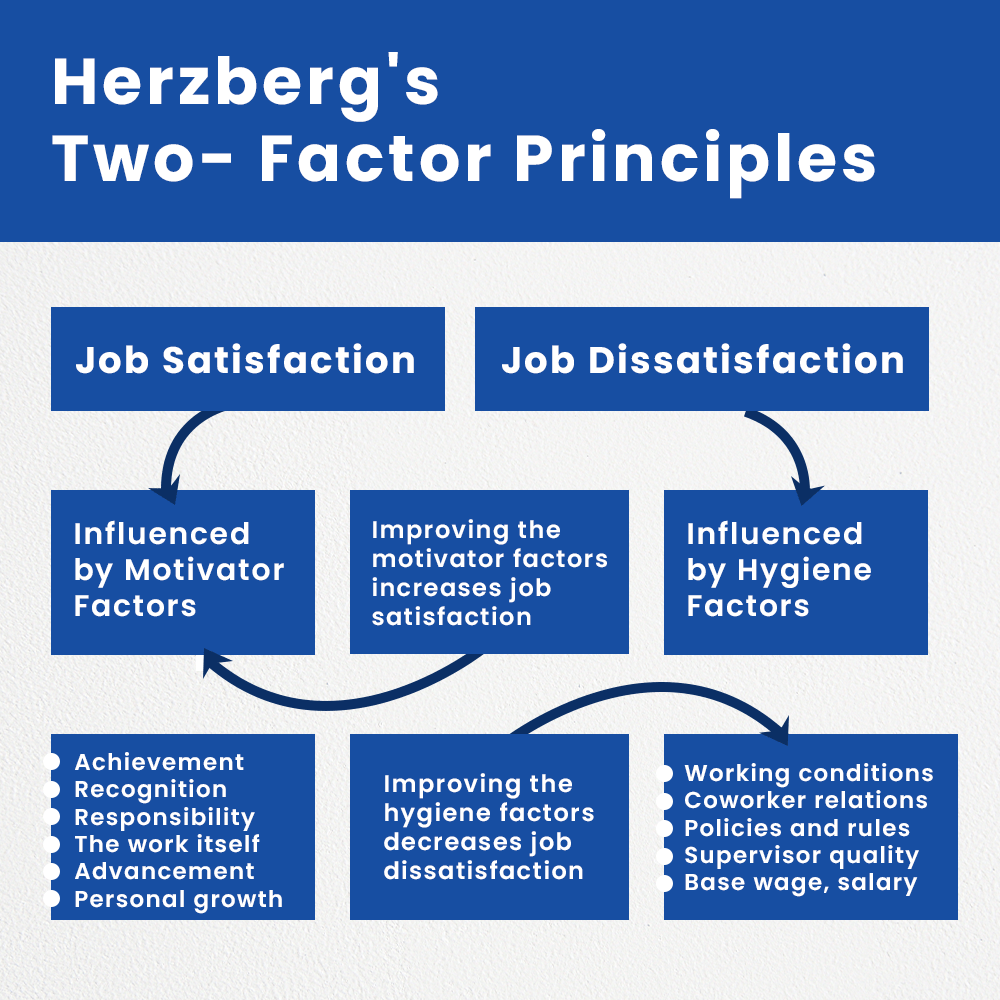Have you ever stopped to think about why you love your job or why you hate it? Do you know what it is that motivates you to work harder or what makes you want to throw in the towel? Well, if you haven’t, let me introduce you to the brilliance of Frederick Herzberg and his Two-Factor Theory.
Background
Herzberg was an American psychologist who, in the late 1950s, was interested in finding out what made people satisfied with their jobs. He conducted a series of studies and interviews and came up with a theory that has since been widely accepted as one of the most important models of job satisfaction. The Two-Factor Theory, also known as the Motivator-Hygiene Theory, is a psychological theory that seeks to explain the factors that influence job satisfaction and dissatisfaction.

Approach
Herzberg’s theory is based on the idea that there are two types of factors that influence job satisfaction: hygiene factors and motivators. Hygiene factors are the basic requirements of a job, such as salary, working conditions, and company policies. If these factors are not present or are unsatisfactory, they can lead to job dissatisfaction. On the other hand, motivators are things that make people feel good about their jobs, such as recognition, achievement, growth, and responsibility. Herzberg believed that these factors, when present, could lead to job satisfaction.
Examples
Here’s an example: imagine you’re an artist who loves to paint. You work in a job that pays well, has a pleasant work environment, and has great benefits. However, you feel unfulfilled because your job doesn’t allow you to use your autonomy and creative skills. You are just supposed to execute whatever is being briefed to you. In this case, motivators such as recognition, achievement, and growth are lacking, which leads to job dissatisfaction.

Limitations
While Herzberg’s Two-Factor Theory has been widely accepted and used, it is important to note that it has some limitations. For one, the theory is based on a limited sample of people and may not be applicable to everyone. Additionally, the theory does not take into account the importance of different factors to different people. What may be a motivator for one person may not be as important to another. Finally, the theory does not consider external factors such as family, personal life, and community, which can also influence job satisfaction.
Conclusion
Herzberg’s Two-Factor Theory provides a useful framework for understanding job satisfaction. By recognizing the importance of both hygiene factors and motivators, we can identify the key drivers of job satisfaction and take steps to create a more fulfilling work environment. Whether you’re an employee or an employer, understanding Herzberg’s Two-Factor Theory can help you to create a work environment that not only meets basic needs but also provides opportunities for growth, recognition, and achievement. So, the next time you’re feeling unsatisfied with your job, take a step back and think about what motivators and hygiene factors are missing in your work life. With this insight, you can make changes that will lead to a more fulfilling and satisfying work experience.





Leave a Reply